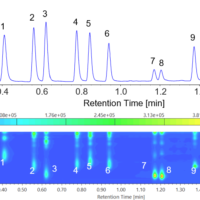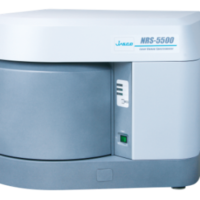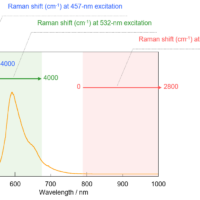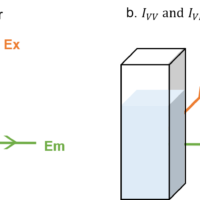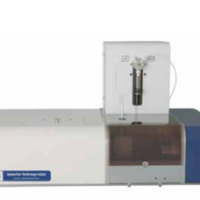Introduction
Polycyclic aromatic hydrocarbons (PAHs), which consist of fused aromatic rings, are produced by incomplete combustion of carbon-containing fuels such as diesel and coal. Some of them are suspected to be carcinogens, requiring the analysis of environmental PAHs. This article shows the utility of the JASCO UHPLC system for the separation and determination of PAHs.
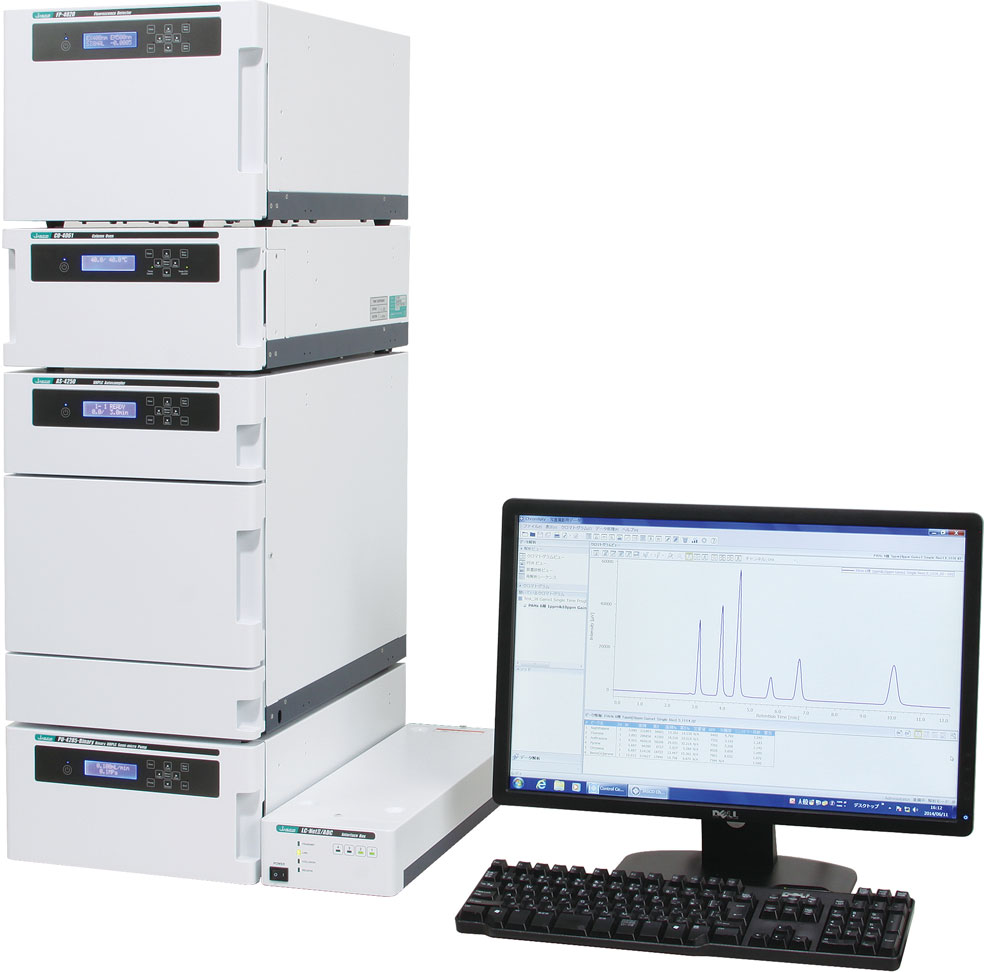
LC-4000 UHPLC system
Experimental
Chromatographic conditions
Column: Zorbax Eclipse PAH(2.1 mmID. x 50 mmL., 1.8 µm)
Eluent A: Water
Eluent B: Acetonitrile
Gradient condition = 60/40(0 min) -> 32/68(3.5 min) -> 0/100(6 min) -> 0/100(8.2 min) -> 60/40(8.3 min)
Flow rate: 0.6 mL/min
Column temperature: 30°C
Wavelength Ex/Em: 280 nm/330 nm (0 min) -> 260 nm/340 nm(2.65min) -> 250 nm/420 nm(3.55 min) -> 270 nm/400 nm(4.6 min) -> 295 nm/410 nm(5.9 min) -> 290 nm/500 nm(6.8 min)
Injection volume: 1 µL
Results
Figure 1 shows chromatogram of a standard mixture of 15 components of PAHs (200 pg each). The chromatograms were obtained using gradient elution and a time program of excitation and emission wavelengths for the fluorescence detector. UHPLC system provides an analysis time 3X shorter than a conventional HPLC separation.
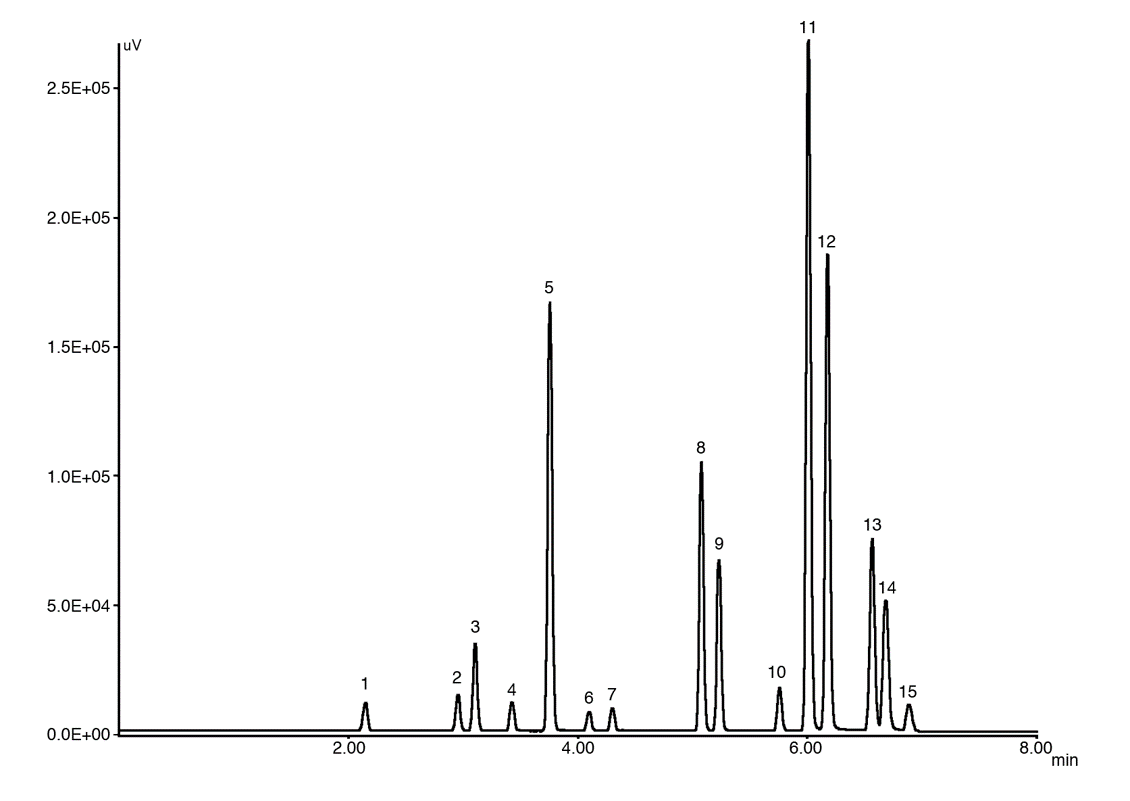
Figure 1. Chromatogram of a standard mixture of PAHs (Peak: 1 = Naphthalene, 2 = Acenaphthene, 3 = Fluorene, 4 = Phenanthrene, 5 = Anthracene, 6 = Fluoranthene, 7 = Pyrene, 8 = Benzo(a)anthracene, 9 = Chrysene, 10 = Benzo(b)fluoranthene, 11 = Benzo(k)fluoranthene, 12 = Benzo(a)pyrene, 13 = Dibenzo(a,h)anthracene, 14 = Benzo(g,h,i)perylene, 15 = Indeno(1,2,3-c,d)pyrene (200 pg each))
Figure 2 outlines an chromatogram obtained from the diesel engine residue with eight components separated with satisfactory resolution.
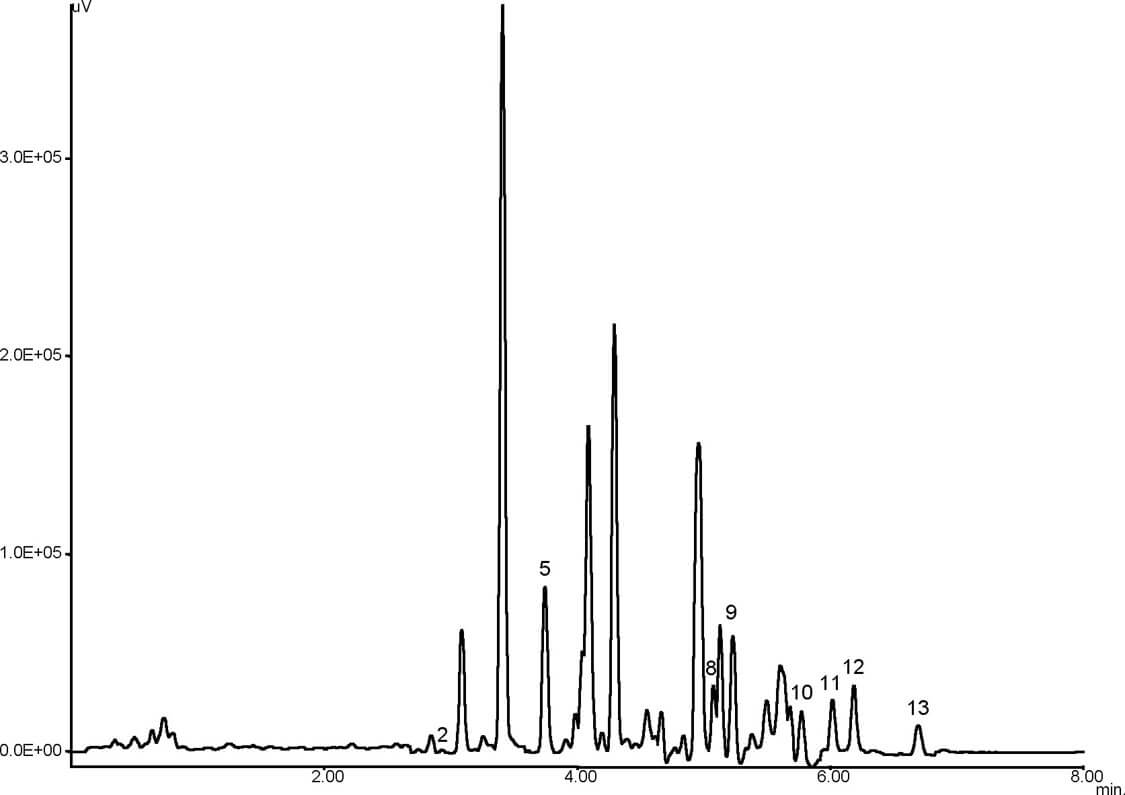
Figure 2. Chromatogram of diesel engine residue (PAHs from the residue in a diesel engine was extracted for 8 hours using a soxhlet apparatus with dichloromethane as the extraction solvent)

